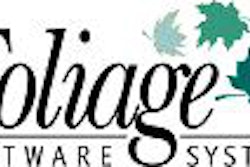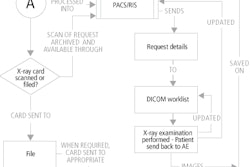The European PACS market generated $468.9 million (U.S.) in revenues in 2003, and is expected to grow at a compound annual growth rate (CAGR) of 17.8% to reach $1.48 billion by 2010, according to market research and consulting firm Frost & Sullivan.
"In terms of sheer business volume, the future belongs to enterprise PACS," said healthcare industry analyst Siddharth Saha, who spoke about European PACS in a pair of industry briefings recently.
The European PACS market growth rate is expected to be higher in 2006 and 2007, spurred on by implementation projects across Europe. Towards 2010, however, the growth rate will decline as the market saturates, Saha said.
The European PACS industry is being driven by a number of factors, including an increasing need for efficient management of voluminous imaging data, Saha said. In addition, a variety of scalable systems are available to suit different requirements, and PACS is seen as a vital component of national healthcare infrastructure in some countries.
Costs associated with PACS acquisition and usage are decreasing, while pay-per-use systems offer additional incentive for customers, Saha said. Standardization initiatives also allow for interoperability between PACS and legacy information systems.
However, the market remains limited by budgetary constraints, poor healthcare infrastructure, and slow adoption of new information technology systems in several countries, Saha said. In 2003, the two largest PACS markets in Europe were Scandinavia (18.8% market share) and Benelux (18.5% market share), with the United Kingdom, Germany, and Italy poised to become large sectors by 2010, he said.
Frost & Sullivan divides the European PACS market into three categories:
- Modality PACS (systems linked up to an individual imaging modality)
- Mid-range PACS (systems with a higher workload processing capability that are integrated with a radiology information system and the hospital information systems across delivery networks)
- Enterprise PACS (large-scale systems with almost unlimited processing capabilities using common archives for storage and linking up radiology departments in hospitals across large geographic expanses).
In 2003, the modality PACS segment is predicted to account for approximately 10% of the market, with the mid-range sector contributing 26%. Enterprise PACS accounts for 64% of the market, according to Frost & Sullivan.
These segmentation trends are expected to continue, with modality PACS shares projected to dip to 5% by 2010. The mid-range PACS market is estimated to have a share of 25% by 2010, with the enterprise PACS segment reaching 70%, driven by government modernization programs in several countries, Saha said.
Frost & Sullivan predicts that in the years to come, modality PACS will remain the typical entry-level system in countries with slow implementation rates such as France and Spain, and in small radiology clinics/departments.
Vendors will also continue developing interoperable systems to allow for future upgrades to higher processing capabilities, and integration with electronic medical records, Saha said. The company also foresees further consolidation among big vendors and smaller niche players in local markets.
Professional services
In a separate briefing, Frost and Sullivan also discussed its research on the European PACS professional services market, which the company estimates generated $95 million in 2003. Revenues from this segment are expected to grow at a CAGR of 19.7% to reach $334 million by 2010, Saha said.
"PACS professional services are key to achieving a smooth transition to new state-of-the-art information technology systems," Saha said.
The growth rate will be highest between 2004 and 2007, at an average of approximately 21%. This will be driven by large-scale contracts in countries such as the United Kingdom, Germany, and Italy. From 2008, the market will slow as major sectors saturate, Saha said.
In line with the overall PACS market, Scandinavia, U.K., and Germany accounted for approximately 60% of the market in 2003, owing to high adoption rates in Scandinavia. Other countries such as France, Italy, Benelux, and Spain contribute the balance, Saha said.
"This trend in major market share is likely to remain more or less similar, as the United Kingdom and Germany develop into major markets due to the sheer number of hospitals that will use PACS," he said. "Even as the market in Scandinavia and Benelux saturates in the later years of the forecast period, these countries continue to represent business potential for continuing services, such as training and support services, and to a large extent, systems integration driven by new IT systems."
PACS implementation drivers include its acceptance as a tool to yield operational gains, as well as the wide range of solutions that are available, allowing customers to choose the system that best suits them, Saha said. The key role that PACS and other information systems such as the electronic medical record can play in improving the national healthcare delivery system in European countries has also prompted governments to hasten implementation, he said.
With advances in technology, acquisition costs are decreasing. Large untapped markets also remain, offering tremendous business potential for market participants, he said.
There are sizeable restraints to PACS implementation, however, including budgetary constraints in some countries, slow bureaucratic decision-making in some markets, a confusing array of system choices, and apprehension towards confronting change management, Saha said.
Professional services can help smooth the transition, and provide needed assessment for information systems, he said. Such services can also aid in planning and designing PACS networks, and can provide acquisition and installation/implementation support.
"The planning and designing of new (PACS) systems and workflows is of utmost importance, as a mistake at this point can have disastrous consequences in the long-term," Saha said.
Professional services also provide testing and validation services, and assist in successful change management, both culturally and organizationally, he said. Training and support services ensure that systems are running at peak efficiency so that maximum technology benefits can be leveraged, Saha said.
"Looking back at the role that services have maintained in successful PACS implementations, it’s not surprising that professional services can account for up to 50% of the value of the PACS contract," he said. "Exceptional professional services will ensure that new state-of-the-art information systems in healthcare are easily integrated into existing departments across the healthcare industry."
Frost segmented the professional services sector by: consulting services, project management services, systems integration services, and training and support services. Consulting services produced a 15.4% market share in 2003, while project management services netted 38.5%. Systems integration services contributed 29.6%, while training and support services notched 16.5%, according to the company.
Consulting services is expected to show high growth in the next few years, driven by PACS implementation projects in the U.K. and Germany, but its share will decline later as the market saturates, he said.
Project management services are expected to take on the lion’s share of professional services in Europe, reaching an estimated market share of almost 41% by 2010, he said. Training and support services will also play an increasing role, climbing to almost 19% by 2010.
In future trends, look for professional services to drive high-end clinical information systems implementation, Saha said.
Participants in the PACS professional services market are also expanding beyond traditional players such as GE Medical Systems, Philips Medical Systems, Siemens Medical Solutions, Agfa HealthCare, and Eastman Kodak Health Imaging. New entrants include: Cap Gemini Ernst & Young, Accenture, EDS, IBM, Dell, Sun Microsystems, Hewlett Packard, Perot Systems Healthcare, and Microsoft, Saha said.
"Imaging/multimodality equipment companies may lose their dominance in certain services segments such as infrastructure planning, consultancy, and implementation support (to emerging players)," he said.
In this environment, Frost & Sullivan foresees new alliances between PACS vendors and consultant firms, IT hardware companies, and systems integration specialists.
By Erik L. RidleyAuntMinnie.com staff writer
February 10, 2004
Related Reading
Affordable equipment accelerates ultrasound proliferation, January 26, 2004
Frost predicts tripling of non-mammo breast imaging in U.S., December 9, 2003
Frost sees growth in European equipment-services market, August 7, 2003
Image-guided/robot-assisted surgery markets to grow, June 18, 2003
Shift to full-field digital units will spur mammography market, April 30, 2003
Copyright © 2004 AuntMinnie.com


















